Clifford Garstang's Blog, page 22
October 14, 2021
I’ve Got Questions for Ona Gritz
Editor’s Note: This exchange is part of a series of brief interviews with emerging writers of recent or forthcoming books. If you enjoyed it, please visit other interviews in the I’ve Got Questions feature.
 Present Imperfect by Ona GritzWhat’s the title of your book? Fiction? Nonfiction? Poetry? Who is the publisher and what’s the publication date?
Present Imperfect by Ona GritzWhat’s the title of your book? Fiction? Nonfiction? Poetry? Who is the publisher and what’s the publication date?Present Imperfect is a work of nonfiction, forthcoming from Poets Wear Prada in October 2021.
In a couple of sentences, what’s the book about?It is a collection of fourteen interconnected essays on the themes of disability, parenting, family secrets, and true crime.
What’s the book’s genre (for fiction and nonfiction) or primary style (for poetry)?Lyrical and intimate personal essays.
What’s the nicest thing anyone has said about the book so far?This, from the wonderful essayist, Barbara Hurd:
“In this brilliantly moving book, Ona Gritz reminds us that storms—physical and emotional—and their aftermaths can lead to a searing devotion to the truths of who we are…These essays move by delicate suggestion, by the shadows a resonating image casts, by language both tough and musical, precise and evocative. Reading this collection, we feel the exhilaration of what it means to be fully alive.”
What book or books is yours comparable to or a cross between? [Is your book like Moby Dick or maybe it’s more like Frankenstein meets Peter Pan?]That’s a hard one. Given my themes and influences, I’d say it’s Heating & Cooling meets Poster Child meets The Lunchbox Chronicles meets After the Eclipse.
Why this book? Why now?My background is in poetry, and when I put this collection of essays together, I did so as I would a poetry book, culling through years of material to see how the various pieces intersected and informed one another. I began the project before the pandemic hit, but when I was ready to submit the manuscript to my publisher, I came upon a May 2020 article in Book Riot titled “Short Essay Collections Are My Comfort Read Right Now,” which told me just how right my timing is. While so many of us are distracted by worry and feeling too overloaded by the news to commit to longer works, short collections of mostly brief essays like mine are providing a nourishing and much needed alternative to doom scrolling and click bait.
Other than writing this book, what’s the best job you’ve ever had?I’ve had some really great jobs, including being a children’s and young adult librarian and leading writing workshops in hospitals, schools, and now, through Zoom, in my kitchen. But as rewarding as these jobs have been, motherhood is the one that truly deepened me as a person and as a writer.
What do you want readers to take away from the book?Personal essays can be both a mirror and a balm. The more intimate the writing, the more likely readers will see something that resonates with their own concerns and experiences. I remember reading in one of Anne Lamott’s essays on parenting that we all walk around believing that everyone else is doing it better. When I came upon those words as an anxious, self-doubting, new mother, I literally cried with relief. In each of these essays, I’ve strived for candor and honesty, and my hope is that readers will find them to be good, recognizable, and sustaining company.
What food and/or music do you associate with the book?I almost always have dark chocolate in reach when I’m writing, so I associate these essays with Dove Promises and Hershey’s purple-wrapped Kisses. And for music, my teenaged self dances in these pages to “Make It With You” by Bread.
What book(s) are you reading currently?Recollections of My Nonexistence by Rebecca Solnit and Like Love by Michele Morano.
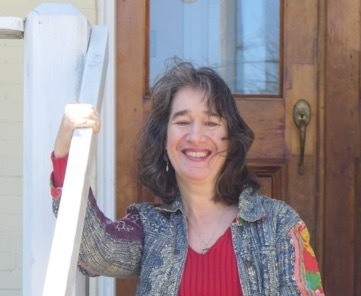 Ona Gritz
Ona GritzLearn more about Ona at her website.
Check out this YouTube video of Ona reading from the book.
Follow her on Facebook.
October 6, 2021
I’ve Got Questions for Louise Marburg
Editor’s Note: This exchange is part of a series of brief interviews with emerging writers of recent or forthcoming books. If you enjoyed it, please visit other interviews in the I’ve Got Questions feature.
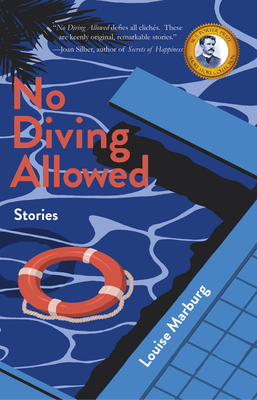 No Diving Allowed by Louise MarburgWhat’s the title of your book? Fiction? Nonfiction? Poetry? Who is the publisher and what’s the publication date?
No Diving Allowed by Louise MarburgWhat’s the title of your book? Fiction? Nonfiction? Poetry? Who is the publisher and what’s the publication date?No Diving Allowed, fiction, short stories, Regal House Publishing, October 6th 2021
In a couple of sentences, what’s the book about?It’s about the complexities of relationships, be they between friends, siblings, spouses, parents and children. Each story contains a swimming pool.
What’s the book’s genre (for fiction and nonfiction) or primary style (for poetry)?Literary fiction
What’s the nicest thing anyone has said about the book so far?That it’s “brilliant.”
What book or books is yours comparable to or a cross between? [Is your book like Moby Dick or maybe it’s more like Frankenstein meets Peter Pan?]I’ll say a cross between The Stories of John Cheever and Your Duck is My Duck by Deborah Eisenberg though not as good as either.
Why this book? Why now?I write stories and sometimes they grow into a collection. I don’t think anyone “needs” to read the book or that it’s somehow important in our time. It’s important to me, and with any luck, some people will like it.
Other than writing this book, what’s the best job you’ve ever had?Art Director at a weekly magazine.
What do you want readers to take away from the book?I’d like readers to feel refreshed by the book, having felt mirth to sadness, a world of emotions.
What food and/or music do you associate with the book?Coffee cream and snack bar food; classic rock
What book(s) are you reading currently?The Outline Trilogy by Rachel Cusk and her newest, Second Place. Also a terrific collection by Chris Stuck called Give My Love to the Savages.
 Louise Marburg
Louise MarburgLearn more about Louise at her website.
Buy the book from the publisher or Bookshop.org.
October 1, 2021
2021 Reading–September
It’s October already? But I only read four books in September? What the heck was I doing all month?
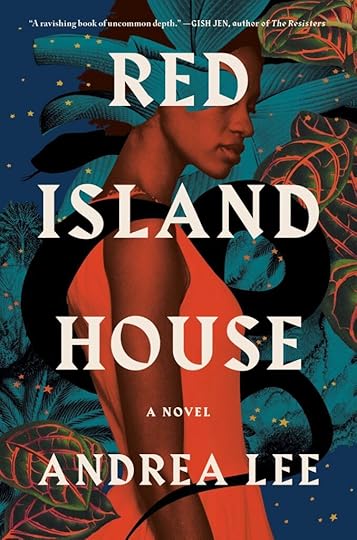 Red Island House by Andrea Lee
Red Island House by Andrea LeeRed Island House by Andrea Lee is a novel I chose to read because I’d already read a couple of chapters of the book that had appeared in The New Yorker in the last year and they intrigued me. The book is set in Madagascar, about which I know next to nothing, and the author is an African American woman living in Italy (like the protagonist of the novel). In a second marriage for both of them, Shay is married to an Italian man, Senna, who builds a vacation home for them on one of Madagascar’s smaller (fictional) islands. The book, then, is basically a novel in stories, in which each chapter is a self-contained episode. Shay and Senna come and go, they have children, they visit the Red House a couple of times a year—Shay teaches African American literature in Milan and Senna is a wealthy businessman—and something interesting always happens. It’s a terrific book about race, class, colonialism, and much more, and I’m now keen to read more by this author.
 Zero Fail by Carol Leonnig
Zero Fail by Carol LeonnigZero Fail: The Rise and Fall of the Secret Service by Carol Leonnig, my bookclub’s selection for September, begins with the nearly accidental origins of the Secret Service and runs through the many failures of the Service over the years, concentrating on the Kennedy assassination and the subsequent attacks on Presidents and candidates alike. Although I learned a great deal about the Secret Service from this book, it strikes me as a pretty yellow account that probably made for good newspaper journalism (the author writes for the Washington Post). It is focused on failures and salacious details of questionable behavior by both Presidents (especially Kennedy and Clinton) and agents, without giving much attention at all to the agency’s successes (unless you count Reagan getting only wounded instead of murdered a success). The final chapter deals with the Trump presidency, including the 2020 election and a brief section on the January 6, 2021, insurrection, and what’s disturbing about that is the extent to which Secret Service agents seemed to support Trump. One more challenge for Biden (and all of us) to deal with.
 Genes, Peoples, and Languages
Genes, Peoples, and LanguagesGenes, Peoples, and Languages by Luigi Luca Cavalli-Storza is, scientifically, a little over my head. The discussion of genes is beyond me, but I can still follow the story of the migration of people from Africa, first to Asia, then to Europe, then to Australasia and the Americas. The last couple of chapters of the book, while still difficult, get to the issues I picked it up for in the first place—how languages evolved. I find this subject fascinating, trying to understand how, knowing that all humans originated in East Africa and spread to the rest of the world from there, the Proto-language became the 5,000 plus languages we have today. I’ve read that story from the perspective of linguists before but adding the genetic data adds another layer to the story.
 Unbecoming by Lesley Wheeler
Unbecoming by Lesley WheelerUnbecoming by Lesley Wheeler, a friend who happens to be an excellent poet, is a fun and easy read. An English professor has recently been appointed chair of her department at a small college. At the same time, her good friend has gone on an exchange program to the UK and her UK replacement has arrived. Also, the main character’s husband has begun a new job at a different college some distance away, which puts a strain on the family, as there are two high-school-age kids. They are all going through a stressful time. The professor, Cyn, is entering menopause and also discovering that she has some kind of magical powers. Silvio, the husband, is stressed about his career and living at some distance from the family (he also teaches and wasn’t able to get a full-time position at Cyn’s college). It’s a quick read and fun, with some interesting subplots thrown in.
September 30, 2021
I’ve Got Questions for Bradley Sides
Editor’s Note: This exchange is part of a series of brief interviews with emerging writers of recent or forthcoming books. If you enjoyed it, please visit other interviews in the I’ve Got Questions feature.
 Those Fantastic Lives by Bradley SidesWhat’s the title of your book? Fiction? Nonfiction? Poetry? Who is the publisher and what’s the publication date?
Those Fantastic Lives by Bradley SidesWhat’s the title of your book? Fiction? Nonfiction? Poetry? Who is the publisher and what’s the publication date?My book is Those Fantastic Lives: And Other Strange Stories. It’s a collection of short stories and is coming from City of Light Publishing on October 1st.
In a couple of sentences, what’s the book about?Those Fantastic Lives is about outsiders trying to find their way in the world. It’s about how strangeness can make us lonely, but how it can also give us power. It’s about the magic our lives can contain when we are willing to find, accept, and embrace it. It’s about loss and transformation. (Oh, and, among other things, it contains ghosts, psychics, monsters, werewolves, and mermaids.)
What’s the book’s genre (for fiction and nonfiction) or primary style (for poetry)?The stories exist in that curious space between magical realism and weird fiction.
What’s the nicest thing anyone has said about the book so far?This one is tough because so many people have been very nice so far. I’m especially grateful to Josh Denslow, Shaun Hamill, Fred Leebron, and Jen McConnell for offering such generous blurbs for my book. Shaun compared my stories to those of Ray Bradbury. That really struck me.
What book or books is yours comparable to or a cross between? [Is your book like Moby Dick or maybe it’s more like Frankenstein meets Peter Pan?]I like to think that if Karen Russell’s St. Lucy’s Home for Girls Raised by Wolves, Ray Bradbury’s short stories, Kazuo Ishiguro’s sad novels, especially Never Let Me Go, and George Saunders’ darkly comic short fiction got together for dinner and invited Those Fantastic Lives that they would all have a good time.
Why this book? Why now?I don’t think I could have written another book. I actually tried a couple of times. These are the stories that kept finding their way back to me, haunting me and demanding to be told. When I began these stories—back at the end of 2013 with “Restored”—I was at this weird stage in my life where I didn’t know what was next. I didn’t understand my place in the world. I needed to see the world in a different way so I could get it—and, more importantly, myself. These stories revealed themselves as I learned and slowly understood my own self and existence. Those Fantastic Lives was a guide for me, in ways, I think. So, it had to be this book for me. It had to be now.
Other than writing this book, what’s the best job you’ve ever had?I’ve worked all kinds of jobs. I was a stocker and cashier at a small grocery store. I was a door-to-door sunroom salesman. I worked at a call center. I quoted insurance rates for medical offices. I’ve taught all kinds of things. English. Visual literacy. Drama. Composition. Teaching creative writing, though, is the one job that makes me feel something otherworldly. There’s just something special about reaching people and letting them tell their stories—and for the students, in turn, to see that their words matter. That they matter. You can’t fake the impact these classes leave on so many students.
What do you want readers to take away from the book?I hope readers will see themselves and that they’ll feel something. Maybe they’ll feel less alone. Maybe they’ll embrace the strangeness they contain. Maybe they’ll go outside and look up into the clouds and feel the incredible magic of the great, big, mysterious world.
What food and/or music do you associate with the book?I listened to a lot of Sturgill Simpson, Frank Ocean, and Mac Miller as I wrote these stories, and I think the issues these artists speak about in their work fits pretty comfortably inside the worlds contained within Those Fantastic Lives. (I also associate ice cream with this collection because sitting down to read a collection of magical stories with some creamy, cold dessert by one’s side creates a whole other level of transportive power.)
What book(s) are you reading currently?I’m currently reading Andrew Siegrist’s collection, We Imagined It Was Rain, and it’s fantastic, being tender and bold and warm. I just finished Becky Hagenston’s The Age of Discovery, which is also really wonderful.
 Bradley Sides
Bradley SidesLearn more about Bradley at his website
Buy the book from the publisher (City of Light Publishing), Parnassus Books, Amazon, or Bookshop.org.
September 29, 2021
I’ve Got Questions for Ami Sands Brodoff
Editor’s Note: This exchange is part of a series of brief interviews with emerging writers of recent or forthcoming books. If you enjoyed it, please visit other interviews in the I’ve Got Questions feature.
 The Sleep of Apples by Ami Sands BrodoffWhat’s the title of your book? Fiction? Nonfiction? Poetry? Who is the publisher and what’s the publication date?
The Sleep of Apples by Ami Sands BrodoffWhat’s the title of your book? Fiction? Nonfiction? Poetry? Who is the publisher and what’s the publication date?My novel-in-stories is titled, The Sleep of Apples. The publisher is: Inanna Publications. The pub date is: September 30, 2021
In a couple of sentences, what’s the book about?The story centers on nine closely linked, diverse characters, brought together in one Montreal neighborhood, Saint-Henri, that’s been slowly gentrifying since the early aughts. Each of my narrators is facing a crisis relating to mental illness, mortality—sooner rather than later—or gender identity.
What’s the book’s genre (for fiction and nonfiction) or primary style (for poetry)?Literary, interconnected stories, a novel-in-stories.
What’s the nicest thing anyone has said about the book so far?I was moved and grateful to the five authors who blurbed the book. Blurbing is quite a selfless, generous, labour-intensive gesture for writers. I’ve always admired Lisa Moore, one of Canada’s finest fiction writers. I’ve never met her, but she wrote this gorgeous blurb: “The Sleep of Apples is masterfully spare and rich, full of love, quakingly honest. Ami Sands Brodoff’s intricately linked stories show us the ties between parents and children; a brief love between strangers; a tangling threesome; and a couple of teenagers broken by tragedy—just to name a few of the complex, enduring and delicate relationships in this collection. The spectre of death floats over these stories, reminding us of what it means to be ‘wide awake, here, unbearably happy.’ Brodoff’s stories are sparklers held up in the dark—brief, fierce, and bold.”
What book or books is yours comparable to or a cross between? [Is your book like Moby Dick or maybe it’s more like Frankenstein meets Peter Pan?]My book is comparable to some recent works which are also novels-in-stories. I’ve been influenced by Joan Silber’s, Improvement, Ideas of Heaven, and Secrets of Happiness; she’s been a mentor to me since I took one of her workshops in New York back in the 1980s. My book has parallels to Elisabeth Strout’s Anything Is Possible, and to the work of David Szalay, Turbulence and All That Man Is. All of these books are distinguished by compression, by meaning which is achieved by the relationship of one story to another and the echoes between them. The reader must be more active.
Why this book? Why now?Before the Pandemic hit, I lost my mother, my father, and my beloved other mother (I don’t like the term step-mother) in fairly rapid succession. Then Covid-19 brought the world to its knees. Impermanence, mortality, were on my mind. While caring for my parents at the end of their lives, I became interested in the lost art of dying: how to help your loved ones prepare for death, how to prepare yourself for their deaths, and ultimately, your own. This philosophy of dying well developed during the bubonic plague which decimated Western Europe in the mid-1300s. Up to two-thirds of Europe’s population died during that plague. The notion of dying well is uncannily timely now as we continually grapple with the loss and grief associated with the Covid-19 pandemic. Recognizing your mortality, reflecting on your purpose and what is meaningful to you is key.
Other than writing this book, what’s the best job you’ve ever had?I love being a mentor and creative writing teacher. I recently participated in a new program, StoryScaping, offering creative writing workshops to teens and seniors—together—in underserved areas of Quebec. Now that’s a dream job!
What do you want readers to take away from the book?I’m hoping readers will become immersed in the characters and live side-by-side with them for awhile. The outgrowth will be increased empathy, helping to reduce stigma against mental illness. I hope my readers will reflect on the quality—not just the quantity—of life. And realize that not everybody will fit into Column A or Column B when it comes to gender.
What food and/or music do you associate with the book?Apples, apples, and more apples! Apples dipped in honey. Potato latkes, matzoh ball soup, jelly donuts, kugel, and all manner of Jewish delicacies. As to music, “To Life, To Life, La ‘Chaim.” Also “Everybody Hurts” by R.E.M. and “1-800-273-8255” by Logic. To understand why, you’ll have to read The Sleep of Apples!
What book(s) are you reading currently?I’m reading the wonderfully poignant, sad, funny story collection by the 90-year-old fiction writer Hilma Wolitzer called Today A Woman Went Mad In The Supermarket. It’s just so good, each sentence gorgeous and surprising, a time capsule of women’s lives from the fifties up to the present. The final, devastating story brings us right up to now and the impact of the Covid-19 pandemic. It’s also a deep, loving, layered portrayal of a long marriage. On my stack is also, Betty, by Tiffany McDaniel, Pain, by the Israeli author Zeruya Shalev, and The Heart of the Matter, by Graham Greene. I always like to have a classic on the go!
 Ami Sands Brodoff
Ami Sands BrodoffLearn more about Ami at her website.
Follow her on Facebook, Twitter, and Instagram
Buy the book from the Publisher (Inanna Publications), Amazon, or your local bookstore.
September 24, 2021
I’ve Got Questions for Mary Hill-Wagner
Editor’s Note: This exchange is part of a series of brief interviews with emerging writers of recent or forthcoming books. If you enjoyed it, please visit other interviews in the I’ve Got Questions feature.
 Girlz ‘n the Hood by Mary Hill-WagnerWhat’s the title of your book? Fiction? Nonfiction? Poetry? Who is the publisher and what’s the publication date?
Girlz ‘n the Hood by Mary Hill-WagnerWhat’s the title of your book? Fiction? Nonfiction? Poetry? Who is the publisher and what’s the publication date?Girlz ‘N the Hood: A Memoir of Mama in South Central Los Angeles, to be published by the Pact Press, an imprint of Regal House Publishing on September 25, 2021.
In a couple of sentences, what’s the book about?This book is about the women and girls of South Central Los Angeles told through my lens and that of my mother. This is a rarely seen view of African American women and girls and how we survive and thrive in the ghetto.
What’s the book’s genre (for fiction and nonfiction) or primary style (for poetry)?This book is a memoir, nonfiction.
What’s the nicest thing anyone has said about the book so far?One reviewer said it was warm and witty and it provides a critical and missing piece of Los Angeles history.
What book or books is yours comparable to or a cross between? [Is your book like Moby Dick or maybe it’s more like Frankenstein meets Peter Pan?]My book is like The Glass Castle because it is a tale of poverty in America and how people survive.
Why this book? Why now?It was time to tell a story about the black women and girls because there are many stories about the men and boys. It is a critical part of who we are as a people and a nation.
Other than writing this book, what’s the best job you’ve ever had?I was a newspaper journalist for 15 years. That was a terrific job! There was something new every day.
What do you want readers to take away from the book?A mother’s love is a powerful force! There are many lessons to learn from people who may not look like you.
What food and/or music do you associate with the book?Motown! Soul Food!
What book(s) are you reading currently?The Bible
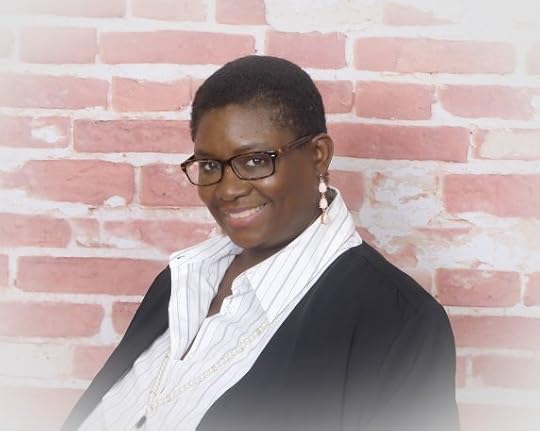 Mary Hill-Wagner
Mary Hill-WagnerLearn more about Mary on her website.
Buy the book from the Publisher (Pact Press/Regal House Publishing), Amazon.com, or Bookshop.org.
September 13, 2021
I’ve Got Questions for Linera Lucas
Editor’s Note: This exchange is part of a series of brief interviews with emerging writers of recent or forthcoming books. If you enjoyed it, please visit other interviews in the I’ve Got Questions feature.
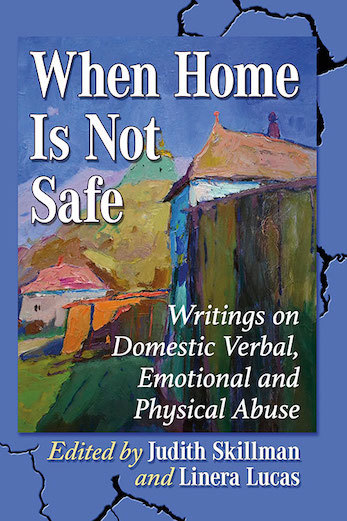 What’s the title of your book? Fiction? Nonfiction? Poetry? Who is the publisher and what’s the publication date?
What’s the title of your book? Fiction? Nonfiction? Poetry? Who is the publisher and what’s the publication date?When Home Is Not Safe: Writings on Domestic Verbal, Emotional, and Physical Abuse, edited by Judith Skillman and Linera Lucas, is a nonfiction anthology. McFarland, a leading academic publisher, will release the book in September 2021.
In a couple of sentences, what’s the book about?When Home is Not Safe is an anthology of poetry and prose by those who have survived domestic abuse. It contains real incidents of verbal, emotional, and physical abuse, as well as true stories of those who left destructive and unsalvageable relationships. The beauty and truth of the language, as well as the honesty and courage on the page make this journey worthwhile.
What’s the book’s genre (for fiction and nonfiction) or primary style (for poetry)?The genre is Health & Wellness/Domestic Abuse.
What’s the nicest thing anyone has said about the book so far?When Home is Not Safe: Writings on Domestic Verbal, Emotional, and Physical Abuse brings a necessary voice to the silent and all-pervasive epidemic of domestic abuse among us. This is a powerful anthology—healing for the writer, eye-opening for the reader. As a therapist and a poet, I highly recommend this collection.
–Gayle Kaune MSW, LICSW, author, Noise From Stars
What book or books is yours comparable to or a cross between? [Is your book like Moby Dick or maybe it’s more like Frankenstein meets Peter Pan ?]The high literary caliber of the poetry, memoir, and creative non-fiction set this anthology apart from self-help manuals and academic treatises on domestic abuse.
Why this book? Why now?In order to fix the serious problems of domestic abuse, we must first educate ourselves. Only then can we begin to repair the damage wrought by our patriarchal society and break the cycle of abuse.
Other than writing this book, what’s the best job you’ve ever had?Although editing this book was a public service and a labor of love, it was not an easy time. Reading so much material about domestic abuse brought on several episodes of PTSD. Fortunately, I knew what to do. I fled to my library, and then directly into the worlds of Jane Austen and Margery Sharp, whose great comic novels restored me.
What do you want readers to take away from the book?Even if you haven’t been hurt by domestic abuse, someone you know has and wishes they could tell you about it. Perhaps you are a therapist, teacher, academic, or social worker who wants to help those who are suffering. Or maybe you are in an abusive relationship and need to know that you are not alone. Others have felt as you do, but with knowledge, support, and the release of shame, victims can become survivors.
What food and/or music do you associate with the book?Hmmmm. How about a mashup of the Dies Irae from Mozart’s Requiem and Aretha Franklin singing RESPECT.
What book(s) are you reading currently?Ninth Street Women: Lee Krasner, Elaine de Kooning, Grace Hartigan, Joan Mitchell, and Helen Frankenthaler: Five Painters and the Movement That Changed Modern Art, by Mary Gabriel, 2018, Little, Brown & Co.
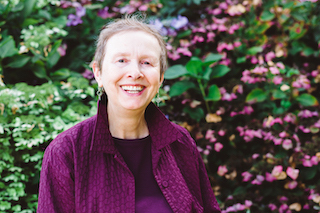 Linera Lucas
Linera LucasLearn more about Linera at her website.
Buy the book from the publisher, or Elliott Bay Book Company (free USPS Media Mail shipping in the US for orders over $20), Amazon, or Bookshop.org.
September 12, 2021
Review of Oliver’s Travels
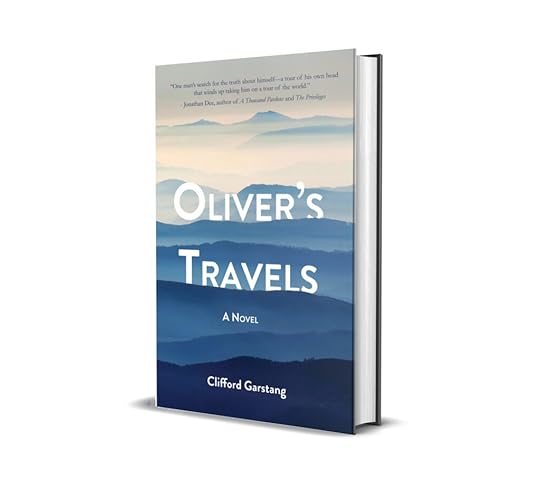
Have you read Oliver’s Travels yet? If you have, I’d love to know what you think. And maybe you’d consider sharing your thoughts on Goodreads or Amazon?
Need some help deciding to give it a try? Check out this review that appeared recently in Lit Pub: Memory vs. Truth: a review of Oliver’s Travels by Clifford Garstang.
Reviewer Juliana Converse had this to say: “Garstang’s dry humor and tight, aphoristic writing make for an engaging unstoppable read . . . The author’s close attention to structure and tone supports the reader’s emotional journey . . .Oliver’s Travels was indeed transporting, challenging, and provocative, drawing me in as the mystery unfolded.”
Your local bookstore should be able to order the book for you, but there are plenty of online options as well. Order from the publisher (Regal House Publishing), Bookshop.org, Barnes & Noble, or Amazon.
Want more information? Check out these interviews I’ve done recently:
I did an interview with Southern Review of Books: Clifford Garstang on Travel, Memory, and Alter Egos.
I did an interview about Oliver’s Travels recently with Lisa and Nancy of Big Blend Radio.
I also did a reading and interview in the Hidden Timber Books Small Press Author Series.
September 7, 2021
I’ve Got Questions for K.E. Flann
Editor’s Note: This exchange is part of a series of brief interviews with emerging writers of recent or forthcoming books. If you enjoyed it, please visit other interviews in the I’ve Got Questions feature.
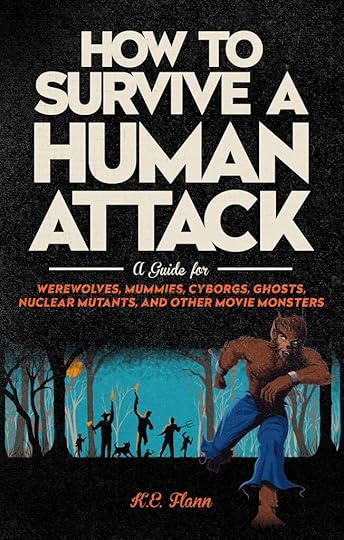 How to Survive a Human Attack by K.E. FlannWhat’s the title of your book?
How to Survive a Human Attack by K.E. FlannWhat’s the title of your book?How to Survive a Human Attack: A Guide for Werewolves, Mummies, Cyborgs, Ghosts, Nuclear Mutants, and Other Movie Monsters
Running Press (Hachette) Sept 7, 2021
In a couple of sentences, what’s the book about?Human attacks account for a staggering 100% of premature deaths for zombies, swamp monsters, androids, exceptionally large animals, and other preternatural beings. This is the first-ever survival guide directed at those populations.
What’s the book’s genre (for fiction and nonfiction) or primary style (for poetry)?It depends who’s asking. If you’re a monster, this book is a crucial manual for navigating the many ways that humans attack. If you’re a human, this book is none of your business. Move along.
What’s the nicest thing anyone has said about the book so far?“As a cyborg manufactured in 2067 and sent back in time to KILL ALL HUMANS, I found the advice in Flann’s book invaluable in blending in with the puzzling society of today. Since reading it, I know not to leak milky fluid when I get aggravated, and I’ve even had moderate success with online dating!”
— DAN VEBBER, Co-executive producer, The Simpsons and Futurama
“As a member of the walking undead, nothing ruins my day quite like some yahoo pulping my noggin with a baseball bat wrapped in barbed wire. Thank goodness How to Survive a Human Attack is here to help me avoid detection while doggedly roaming the earth seeking the human brains I crave. Thanks, K.E. Flann!”
–RICH DAHM, Co-Executive Producer, The Colbert Report and The Middle
What book or books is yours comparable to or a cross between?The book will have likely appeal for fans of Max Brooks’ The Zombie Survival Guide and the TV show/film What We Do in the Shadows.
Why this book? Why now?Humans have never been especially easy to dominate or eat, but now they’re more savvy (and possibly more irritable) than ever in the past 200,000 years. It’s not really possible to “wing it” anymore, even if you have wings.
Other than writing this book, what’s the best job you’ve ever had?At the Ministry of Preternatural Resources, I have the privilege to serve as Cranial Impact Assessment Officer, drawing upon years of experience with paved areas, including Food Lion and the gas station, to ensure safe passage for visitors to the human world. I’m proud of activities I’ve designed (now accepted as best practice) for introducing preternatural beings to their surroundings – these include human petting zoos, chasing demonstrations, and audio tours with rentable headsets.
What do you want readers to take away from the book?I would ask that readers please not take anything away from the book. Even though paper can seem alluring as food or nesting material, the book’s contents should remain inside the book at all times.
What food and/or music do you associate with the book?Music and food are very closely associated. If you have a bad-ass score or theme song, you are 72% more likely to succeed with desired eating and dominating activities. Make sure to choose something up-tempo and percussive, possibly with a face-shredding guitar solo.
What book(s) are you reading currently?A horror novel called The Origin of the Species by Charles Darwin
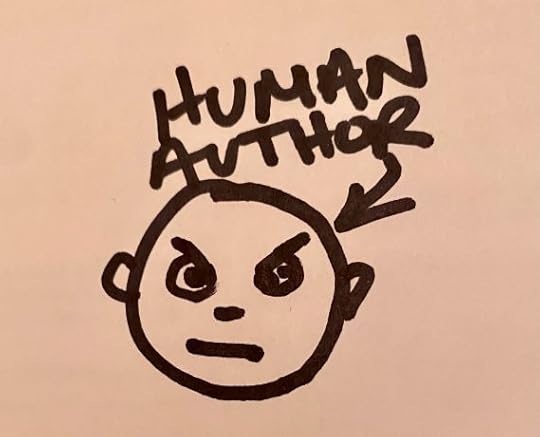
Learn more about K.E. Flann at her website.
Follow her on Twitter.
Buy the book from the publisher or on Bookshop.org.
September 4, 2021
My Mandarin Chinese Journey: Part 8
My Mandarin Chinese Journey: The Pandemic
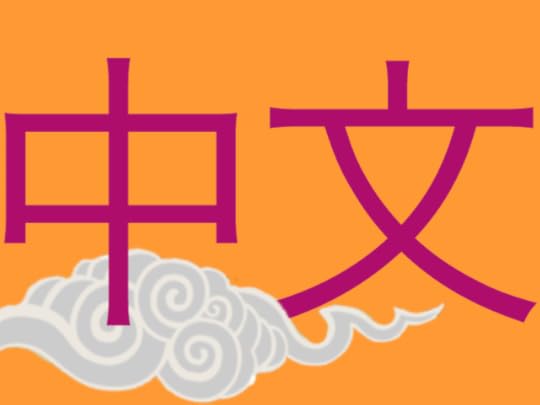 Zhong Wen (Chinese)
Zhong Wen (Chinese)Just as COVID-19 was beginning to spread in China in November 2019, I was visiting Barcelona, Spain for the first time. I had planned two weeks there, writing part of each day and being a tourist the rest of the time. I did do some writing, although I liked the city so much that I devoted more and more time to exploring its many fascinating neighborhoods and also taking a few day trips to surrounding areas.
Because my Spanish was rusty (it was always pretty poor, after just one year of study and a couple of trips to Mexico), I also wanted to spend time every day doing some reviews on Duolingo. While I was on the Duolingo app, I decided, I’d also spend a little time reviewing Chinese.
I loved doing the Spanish reviews, and I loved being in Spain, so I resolved to continue with Duolingo Spanish after I came home with a view to returning to Spain soon or maybe venturing to other Spanish-speaking countries. Although that trip has yet to materialize, thanks to the pandemic, my Duolingo Spanish streak is now at well over 600 days in a row.
As for Chinese, I decided that Duolingo isn’t the best program for studying that language, and the choices I’ve made for continued Chinese study are really what this post is about.
 sample page from Rosetta Stone
sample page from Rosetta StoneI worked with Duolingo Chinese for a while, but then I remembered that I had purchased a Mandarin course on Rosetta Stone some time earlier. I was able to update that course and, as it turned out, for a small fee I could convert the course to a lifetime membership (which also allows study of 25 other languages). I jumped in and I’ve been continuing my Chinese studies on Rosetta Stone since. I like Rosetta Stone because it provides both listening and reading input and creates more-or-less realistic dialogues matched to pictures. I’ll keep using it until I run out of Chinese content, and then I’ll probably enroll in a live-online course.
However, for me one of the greatest obstacles to progressing in Chinese has been remembering the Chinese characters. (I know people who only learn how to speak Chinese, but for me the most interesting part of the language is the writing.) I had tried to use flashcards for Chinese, but using physical cards—I own a good set that I bought years ago—isn’t really very efficient, especially if you want to use the Spaced Repetition System (SRS) of learning, which I did.
Spaced Repetition simply means that as your recollection of words strengthens, you see those words in your flashcard deck less and less often, with the words you’re having trouble with appearing more often. Computers make this method work beautifully and there are a number of programs and apps that I’ve looked at over the years that do this, with mixed results and awkward interfaces.
Last year, though, early in the pandemic, I came across Hack Chinese, which is an SRS designed specifically for learning Chinese characters. I signed up for a free trial and eagerly bought a subscription when the trial ended.

I try to spend at least 20 minutes a day with my “deck” of cards, which is always expanding because I add to it—sometimes adding individual characters, sometimes adding lists from Rosetta Stone or one of the other texts I consult. I’ll begin a 6 or 10-minute study session and the program will flash a character or a word consisting of two or three characters. If I know the pronunciation and meaning, I move on. If not, there are some review options including listening to an audio of a native speaker saying the word and, often, using the word in a sentence. Since I’ve gotten it wrong, it will reappear in my deck for that session three times to make sure I’ve got it and will likely also appear in my next study session.
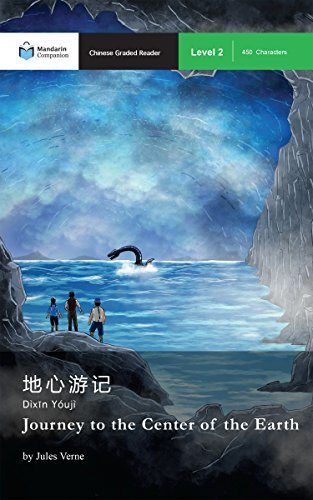
I also wanted more practice reading Chinese, so I have picked up a couple of “graded readers,” simple texts that tell a story. The readers become increasingly difficult as the student progresses through the series. I’m currently reading Journey to the Center of the Earth, but set in China. I’m also looking for audio content to improve my listening skills. Both reading and listening are crucial inputs that a Chinese learner needs.
The last thing I’ll mention is a blog that is devoted to one man’s efforts to learn Chinese. In I’m Learning Chinese, Mischa writes (and speaks, because the blog is connected to his podcast) about his journey. He’s taking his learning far more seriously than I have and as a result has made much more progress.
I’ll continue on my journey and, who knows, maybe after the pandemic I’ll be able to return to China.



